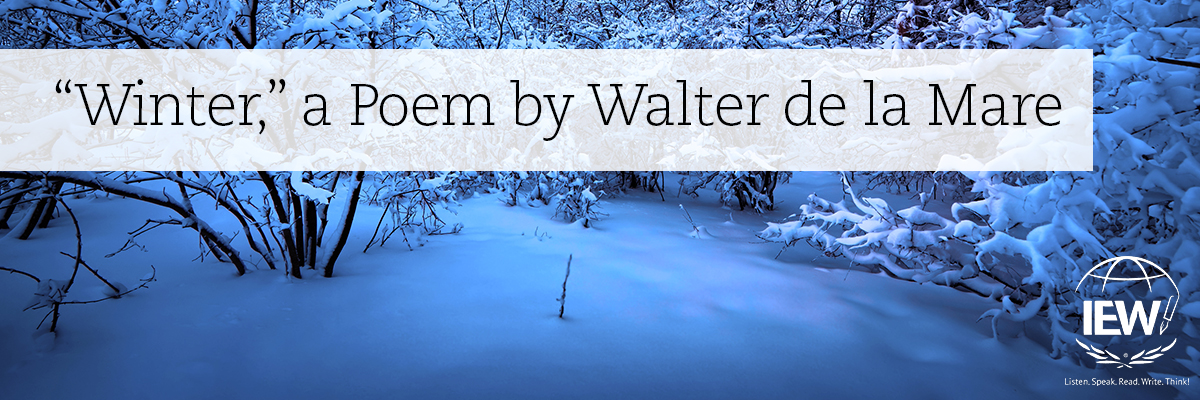
Today’s featured poem is composed by Walter de la Mare, the poet who also crafted “Some One,” a poem encountered in Level 2 of IEW’s Linguistic Development through Poetry Memorization. After you finish it, look over some of the many techniques incorporated in this brief three-stanza poem, and unpack a few to share with your students.
Winter
by Walter de la Mare
And the robin flew
Into the air, the air,
The white mist through;
And small and rare
The night-frost fell
Into the calm and misty dell.
And the dusk gathered low,
And the silver moon and stars
On the frozen snow
Drew taper bars,
Kindled winking fires
In the hooded briers.
And the sprawling Bear
Growled deep in the sky;
And Orion’s hair
Streamed sparkling by:
But the North sighed low,
“Snow, snow, more snow!”
As you reflect on the poem, consider the scope and vantage point of each stanza. In the first, the reader focuses on a single creature, a robin, that is contrasted against the winter white. As dusk begins to fall in the second stanza, the reader’s gaze expands to take in even more beauty: the heavenly objects of moon and stars. In the final stanza, the reader’s perspective broadens even more when the poet draws attention to more heavenly features, the constellations Ursa Major, Orion, and even oblique mention of the North Star when de la Mare writes, “But the North sighed low.”
Beginning the poem with the word “and” causes readers to feel as if they are seeing the scenery in medias res. The poem feels calm and cold, and the reader can easily visualize the spot. While it all feels still and peaceful, the final lines remind the reader that winter isn’t yet done.
Poems are wonderful ways to share compact yet powerful packets of stylistic techniques and vocabulary. In this short piece readers encounter repetition, dual adjectives, alliteration, onomatopoeia, personification, and vocabulary, just to name a few. Don’t feel as if you need to point out all of them to your students, but take time to notice and appreciate a few of them. To draw in a bit of science, consider having a night sky viewing where you point out the heavenly bodies mentioned in the poem.
If you would like to share more poetry with your students, including de la Mare’s charming “Some One,” check out Linguistic Development through Poetry Memorization. It’s a great way for students to build vocabulary, comprehension, and syntax. Check out a free sample of the course at this link.
|
Jennifer Mauser has always loved reading and writing and received a B.A. in English from the University of Kansas in 1991. Once she and her husband had children, they decided to homeschool, and she put all her training to use in the home. In addition to homeschooling her children, Jennifer teaches IEW classes out of her home, coaches budding writers via email, and tutors students who struggle with dyslexia. |

